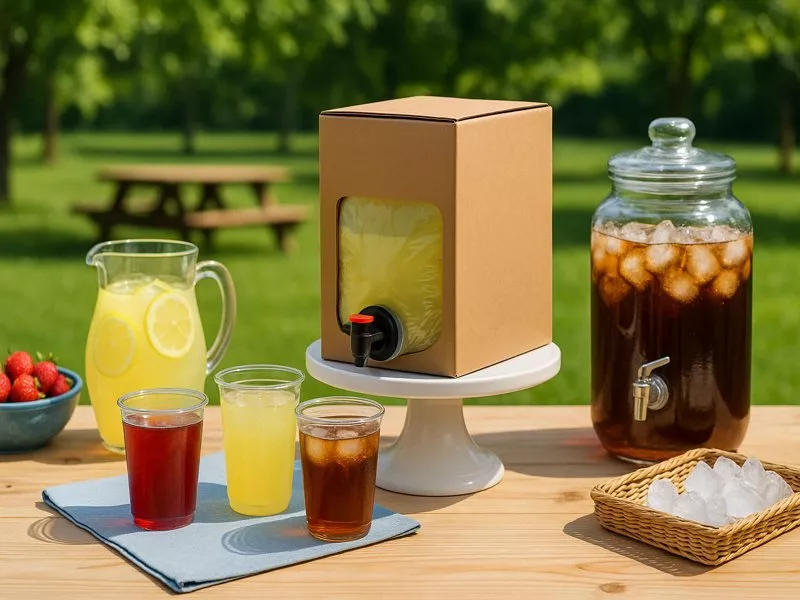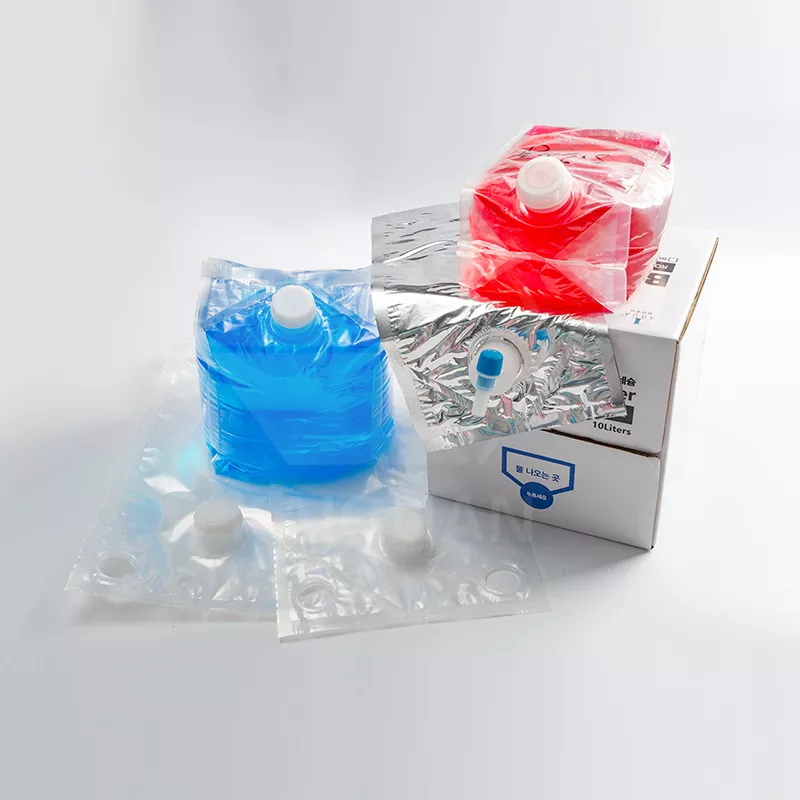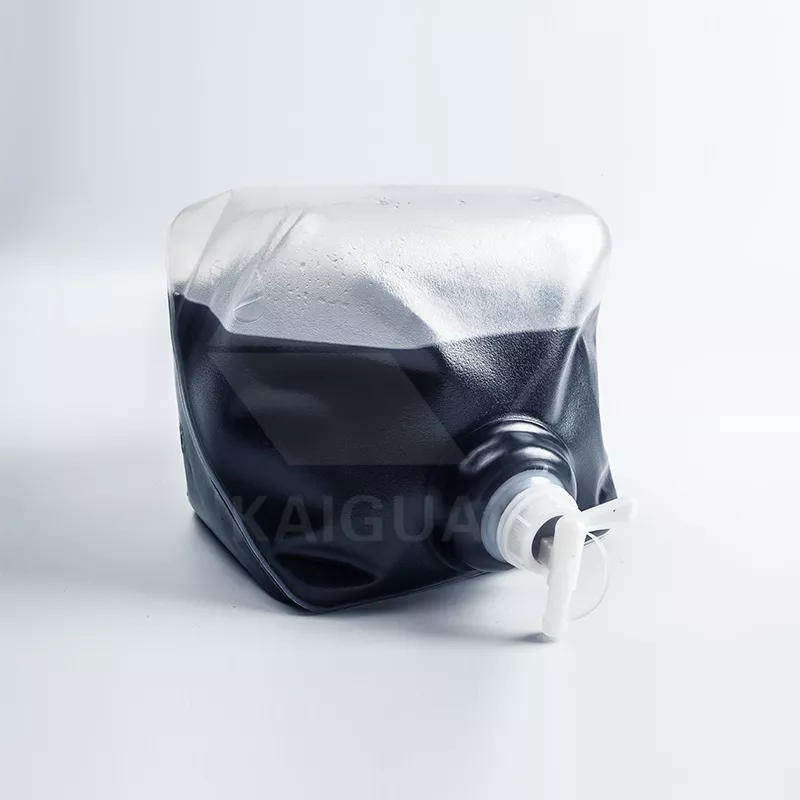Packaging offers many options, with rigid and semi-rigid being the most popular. Each has its advantages based on the product, transportation needs, and cost-efficiency. This article explores the differences between these packaging types, focusing on solutions like bag-in-box, cheertainer, and cubtainer, helping companies choose the best option.
What is Rigid Packaging?
Rigid packaging refers to packaging that retains its shape and structure under typical conditions. Its ability to withstand deformation guarantees the safety of its contents. Rigid packaging can include materials like glass, metal, and certain plastics. Common examples include glass bottles, plastic containers, aluminum cans, and steel tins.
Benefits of Sturdy Packaging
- Durability: The contents are highly protected by rigid packing. The solid structure prevents crushing and maintains the shape of the packaging, which is essential for products that need to be handled roughly or stored for extended periods.
- Premium Appearance: Rigid packaging often provides a more premium appearance, making it a popular choice for luxury products like perfumes, high-end beverages, and cosmetics. The package conveys an impression of luxury and elegance due to its substantial weight.
- Shelf Appeal: The stability and sturdiness of rigid packaging ensure that products stand out on shelves, enhancing visibility and making them more likely to catch the consumer’s eye. Rigid packaging also supports better stacking and display.
- Long Shelf Life: Certain types of rigid packaging, especially those made from glass or metal, help to preserve the product’s shelf life by creating a hermetically sealed environment that protects against contamination.
Disadvantages of Rigid Packaging
- Higher Costs: The production and material costs for rigid packaging tend to be higher. The manufacturing process for items like glass and metal containers can be energy-intensive, and the cost of materials can add up quickly.
- Larger Carbon Footprint: Due to the use of heavier materials like glass and metal, rigid packaging often has a higher environmental impact. These materials are not only energy-intensive to produce but also take up more space during transportation, increasing their carbon footprint.
- Breakability: While rigid packaging is highly protective, it is often more prone to breakage, especially glass packaging. This can lead to product waste and additional packaging costs for protective inserts.
What is Semi-Rigid Packaging?
Conversely, semi-rigid packaging blends the best features of flexible and rigid packaging. While it is not as solid as rigid packaging, it retains some structural integrity and does not collapse completely. Semi-rigid packaging materials include molded plastics, certain types of cardboard, and flexible materials that are reinforced or structured to hold their shape when filled.
Advantages of Semi-Rigid Packaging
- Lightweight: One of the key advantages of semi-rigid packaging is its lightweight nature. This makes it more cost-effective for transportation, reducing shipping expenses and the overall environmental footprint.
- Cost-effective: Compared to rigid packaging, semi-rigid packaging is typically less expensive to create. The manufacturing processes are more flexible and less resource-intensive, which helps keep costs down for producers.
- Flexibility in Design: Semi-rigid materials often offer more flexibility in terms of design and shape, making them ideal for packaging products that come in varying shapes and sizes. Packaging like bag-in-box, cheertainer, and cubtainer allows for easy customization.
- Sustainability: Many semi-rigid packaging options use recyclable materials or are designed for reuse, making them more sustainable. The lightweight nature of these products also leads to a smaller carbon footprint when compared to traditional rigid options.
Disadvantages of Semi-Rigid Packaging
- Less Protection: While semi-rigid packaging can provide some structural integrity, it does not offer the same level of protection as rigid packaging. Products inside may be more susceptible to damage during transit, particularly when they are fragile or require extra protection.
- Shorter Shelf Life: Some types of semi-rigid packaging do not offer the same airtight seals as rigid packaging, which could lead to shorter shelf lives for products that are sensitive to air and moisture.
- Less Premium Appearance: While semi-rigid packaging can be visually appealing, it may not have the same premium feel as rigid packaging. For high-end products, this could impact consumer perception.
| Feature | Rigid Packaging | Semi-Rigid Packaging |
| Materials Used | Glass, metal, rigid plastics (e.g., PET, HDPE) | Molded plastics, cardboard, flexible bags |
| Protection | Excellent protection from physical damage | Moderate protection, suitable for less fragile products |
| Cost | Higher due to materials and production processes | Lower, more cost-effective production and shipping |
| Environmental Impact | Higher carbon footprint, recycling can be difficult | More eco-friendly, recyclable materials used |
| Appearance | Premium, luxury look | Less premium, more functional in appearance |
| Storage and Transport | Bulky, less efficient storage and transport | Space-saving, easier to stack and store |
| Shelf Life | Longer shelf life due to airtight sealing | Shorter shelf life, may require protective layers for some products |
Types of Semi-Rigid Packaging
Now that we have a basic understanding of the differences between rigid and semi-rigid packaging, let’s explore some common semi-rigid packaging types: bag-in-box, cheertainer, and cubtainer. These packaging solutions are especially popular in the food and beverage, chemical, and pharmaceutical industries.

Bag-in-Box Packaging
Bag-in-box packaging is a popular semi-rigid solution where a flexible bag is placed inside a box. The bag is typically made from plastic and holds the product, while the outer box provides some rigidity and protection. This type of packaging is widely used for liquids such as wine, juices, and oils, as well as for other bulk products like chemicals.
Advantages of Bag-in-Box:
Space-Efficient: Bag-in-box packaging is highly space-efficient, particularly during storage and transportation. The box offers structural protection, while the flexible bag collapses as the product is used, minimizing empty space.
- Sustainability: Because it uses fewer materials and is simpler to recycle, the bag-in-box solution is better for the environment than rigid packaging.
- Cost-Effective: The production costs for bag-in-box packaging are lower compared to rigid options like bottles or cans. For large-scale products, this makes it a desirable option.
Applications: Commonly used for beverages, especially in large quantities. Food items, chemicals, and medications that need to be packaged in large quantities also use it.

Cheertainer Packaging
A cheertainer is another form of semi-rigid packaging similar to bag-in-box. It combines a flexible bag with a cardboard box, but it offers a more rigid outer structure to support the bag. Often used for liquids, the cheertainer is known for its high strength and durability.
Advantages of Cheertainer:
- Portability: Cheertainer packaging is highly portable, with the box providing a sturdy outer layer that makes handling easier.
- Cost and Storage: Like the bag-in-box, cheertainers are a cost-effective and space-saving solution. The compact packaging reduces transportation costs.
- Applications: Used primarily for liquids in the food and beverage industry, such as juices, milk, and even alcohol.

Cubtainer Packaging
Cubtainer packaging is similar to both bag-in-box and cheertainer but typically features a more rigid outer box design. The bag inside holds the product, and the box’s cubic shape ensures a more stable structure. Applications for this kind of packaging are numerous and include industrial goods, chemicals, and food & drink.
Advantages of Cubtainer:
- Versatility: The container can be adapted to hold a range of goods, including pastes, liquids, and powders.
- Stackability: The cube-shaped box makes greater use of storage space and makes stacking simpler.
- Applications: Commonly used for beverages, especially in larger quantities, as well as for packaging non-food products like chemicals and detergents.
Conclusion
Rigid packaging offers premium protection and appearance for high-end products, while semi-rigid options like bag-in-box are cost-effective, space-saving, and eco-friendly. Semi-rigid packaging is gaining popularity for its adaptability, while rigid remains preferred for durability and protection. The decision should balance functionality, cost, and aesthetics.
